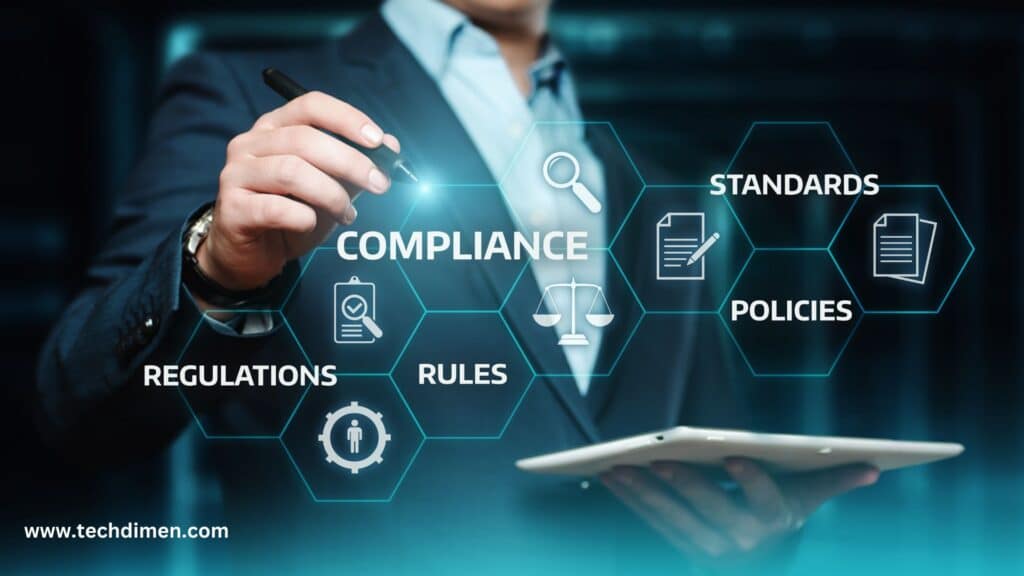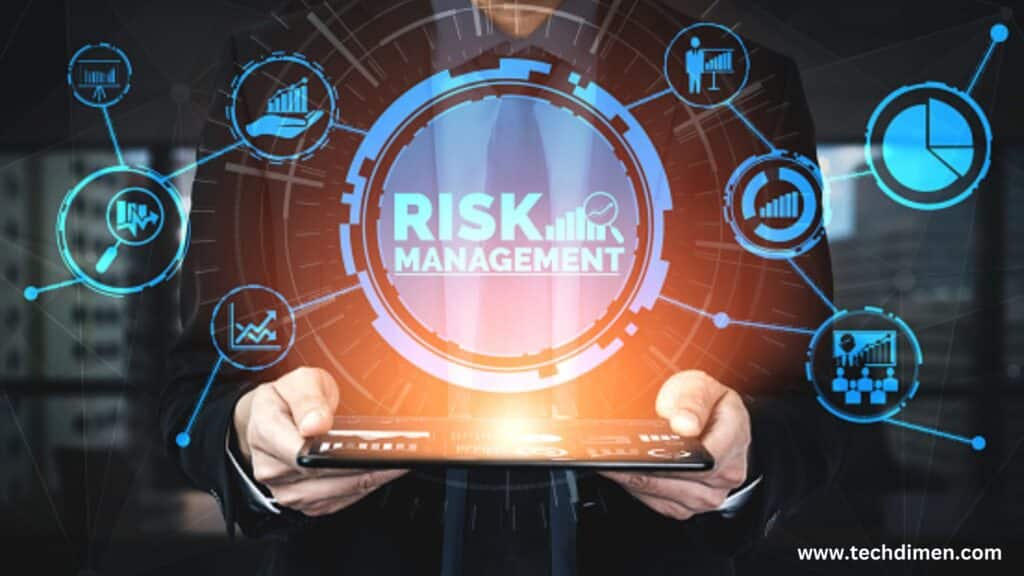Introduction
In today’s interconnected ecosystem, the term “Assigned Risk In Technology” refers to companies deemed too unpredictable or vulnerable for standard acceptance by insurers or corporate partners. These businesses often land in specialized risk pools, encountering more rigorous checks, steeper costs, and increased regulatory attention. While the concept borrows from traditional insurance sectors, its relevance in the tech space has surged alongside growing cybersecurity and compliance concerns.
What Triggers the High Risk Tag for Tech Firms
A Assigned Risk in the Technology company’s risk classification stems from past performance, system dependability, and legal compliance. Firms with frequent data breaches, recurring system outages, or unresolved regulatory often find themselves from typical service agreements and insurance policies, needing to seek with more rigid conditions and elevated fees.
Insurance Roadblocks for Technology Outliers

Cyber insurance presents a serious hurdle for firms labeled as high-risk. Those with recurring security incidents or unsatisfactory audit outcomes are frequently steered into restricted insurance pools. These policies come with higher premiums and fewer coverage options. To regain eligibility for standard plans, companies must offer proof of improved risk controls and a reliable incident response system.
Technology outliers—startups, disruptors, and companies pushing the edge of innovation face unique and often frustrating challenges when it comes to securing insurance coverage. These are organizations building products or services that don’t fit neatly into existing risk models. Think autonomous vehicles, generative AI platforms, decentralized finance (DeFi) apps, and biotech software using machine learning for diagnostics.
Insurers, by nature, are conservative. They rely on data, historical precedent, and actuarial models to assess risk. When those models break down due to emerging technology, unclear regulatory environments, or unpredictable behavior insurance providers often respond by raising premiums, adding exclusions, or denying coverage entirely. That creates significant roadblocks for companies at the frontier of tech innovation.
The Role of Artificial Intelligence in Heightened Risk
Artificial intelligence introduces a fresh layer of complexity. When machine learning models generate flawed decisions like misdiagnosing a medical issue or recommending a risky financial move the question of accountability becomes blurred. This uncertainty, paired with non-transparent AI operations, places many AI-based firms in high-risk categories. Regulators demand ethical clarity and technical reliability to avoid assigning such labels.
The Impact of Regulatory Missteps on Risk Ratings

Failing to comply with major privacy frameworks such as GDPR, HIPAA, or CCPA has serious repercussions. Businesses that repeatedly fall short of legal standards can face sharp financial penalties and lose client trust. Insurance providers may retract coverage options altogether, while large clients and government bodies may avoid future partnerships with non compliant organizations.
How Risk is Quantified in the Digital Landscape
Risk evaluation in tech often involves advanced models that analyze multiple data points. These include breach history, system architecture, patch management, and the reliability of external partners. For instance, the FAIR model translates risk into potential monetary impact, giving decision-makers a clearer picture of where and how to intervene to reduce exposure.
the World Example from the SaaS Sector
Consider a SaaS company that failed to encrypt user data and neglected internal audits. After suffering a major ransomware attack, it lost several clients and was rejected by key insurance providers. Forced into a high-cost assigned risk pool, the company also saw its payment processor terminate services due to excessive exposure. Eventually, through major reforms like implementing SOC 2 controls, improving vendor screening, and conducting security training, it requalified for standard coverage.
Strategic Actions to Reduce Assigned Risk
Organizations aiming to move out of the high-risk bracket must implement structured assessments aligned with global frameworks like ISO 27001 or the NIST Cybersecurity Framework. They must modernize legacy systems, secure all access points, and conduct ongoing vulnerability reviews. In addition, a well-trained workforce plays a central role in minimizing potential threats.
Embedding Security Awareness Across Teams

Mitigating assigned risk goes beyond tech upgrades. Companies must embed a culture of risk awareness across departments. This includes setting up live monitoring systems, assigning accountability for digital safety, and creating clear governance channels. Such measures often lead to improved ratings in external assessments and greater trust from stakeholders.
Assigned Risk Across Technology Sectors
| Tech Sector | Common Assigned Risks | Primary Risk Drivers | Typical Impacts |
|---|---|---|---|
| Fintech | Regulatory non-compliance, data breaches | Evolving financial laws, rapid scaling, API vulnerabilities | Denied payment licenses, higher cyber insurance premiums |
| AI/ML Platforms | Algorithmic bias, black-box decision making | Lack of model explainability, unpredictable outputs | Legal exposure, reduced client trust, limited insurability |
| HealthTech / MedTech | Patient data exposure, FDA non-compliance | Integration with EHRs, HIPAA violations, software faults | Product bans, loss of funding, denied clinical certifications |
| IoT and Smart Devices | Device hijacking, insecure firmware | Lack of OTA updates, poor endpoint security | Vendor rejection, physical safety risks, costly recalls |
| SaaS Infrastructure | Multi tenant data leakage, downtime risks | Misconfigured cloud environments, inadequate SLAs | Client churn, SLA breaches, insurance claim denials |
| Blockchain / Web3 | Smart contract exploits, unregulated asset handling | Immutable code errors, DAO governance loopholes | Loss of user funds, denied financial partnerships |
| Autonomous Systems | Safety system failure, liability ambiguity | Unproven edge-case handling, sensor failure | Insurance denial, litigation exposure, regulatory delays |
| EdTech Platforms | Student privacy violations, non-compliance with COPPA/FERPA | Weak access control, cloud storage risks | Contract losses, penalties, public backlash |
| Quantum Computing | Cryptographic disruption risks, unknown vulnerabilities | Untested protocols, future-proofing challenges | Lack of underwriting standards, high-risk classification |
Using Integrated Risk Platforms for Better Visibility
Governance, Risk, and Compliance (GRC) platforms now offer deep insights into an organization’s risk landscape. These tools help track potential weaknesses across IT environments, employee behavior, and cloud platforms. Real-time dashboards allow managers to stay ahead of developing issues, influencing more favorable evaluations by insurers and clients alike.
ESG and Risk Classifications in Emerging Tech

Environmental, Social, and Governance (ESG) practices are becoming key components of risk profiling. Insurance providers and investors are increasingly interested in how tech firms govern AI decisions or manage sensitive data. Transparent models, such as explainable AI and strong ESG frameworks, often result in lower risk ratings and broader access to resources.
The Competitive Edge of Low Risk Status
Technology firms with strong risk profiles attract better opportunities. From smoother fundraising rounds to inclusion in government tenders, the advantages are numerous. Demonstrating compliance, transparency, and secure infrastructure builds a positive reputation that pays off in both short-term contracts and long-term growth.
Turning Assigned Risk into a Strategic Opportunity
Instead of resisting a high-risk classification, forward-looking firms treat it as a roadmap for reform. By addressing weak points identified during assessments, they not only reclaim insurance access but also establish a more resilient structure. This transformation often leads to stronger customer loyalty and an enhanced market reputation.
Adjusting to Evolving Risk Metrics in Tech
As digital landscapes grow more complex, risk measurement tools and criteria are evolving as well. Assigned risk is no longer reserved for fringe players t can affect any organization that overlooks the intricacies of compliance and cyber defense. Those that adapt proactively, invest in strategic technologies, and foster internal accountability will thrive in this new environment and build long-term trust in a data driven world.
Charting a Safer Course in a Risk-Prone Industry
In summary, managing assigned risk in technology is less about removing threats entirely and more about anticipating, understanding, and preparing for them. Through a blend of technical, cultural, and regulatory measures, companies can navigate away from danger zones and into a more stable and growth-friendly future.
FAQs
What does “assigned risk” mean in a technology context?
Assigned risk in technology refers to a classification given to organizations, systems, or technologies that present a higher than average risk profile. This usually occurs when a business faces challenges obtaining insurance, compliance certifications, or market trust due to cybersecurity vulnerabilities, regulatory violations, or lack of operational history. The concept is borrowed from traditional insurance and adapted to account for modern tech-sector complexities.
Why would a tech company be placed in an assigned risk pool?
A tech company may be placed in an assigned risk pool if it has experienced frequent security breaches, lacks robust compliance procedures, or operates in a high-risk sector such as fintech, medtech, or artificial intelligence. Companies with new or unproven technology, inadequate internal controls, or risky third-party dependencies may also receive this classification from insurers, regulators, or large enterprise clients.
How is assigned risk calculated in the tech industry?
Assigned risk is typically calculated through a combination of proprietary and standardized risk assessment models. These may include factors such as breach history, data sensitivity, uptime reliability, supply chain exposure, regulatory compliance, and vendor risk. Models like FAIR, CVSS, or those used by cyber insurers help quantify and weigh each component to generate a comprehensive risk score.
What are the consequences of being classified as high-risk in technology?
A high-risk classification can lead to limited access to affordable cyber insurance, increased premiums, and more exclusions in policies. It may also reduce investor confidence, block access to enterprise contracts, and trigger additional regulatory scrutiny. In some cases, it can result in denied partnerships or delayed product launches due to risk concerns from stakeholders.
Can a company reduce its assigned risk status?
Yes, a company can reduce its assigned risk by implementing stronger cybersecurity measures, maintaining ongoing compliance with relevant regulations, vetting third-party vendors thoroughly, and improving transparency through audits and reporting. Regularly updating internal risk management practices and using governance, risk, and compliance (GRC) tools can significantly help reclassify a company from high-risk to standard-risk over time.
Is assigned risk the same as underwriting risk?
No, assigned risk and underwriting risk are related but distinct. Underwriting risk refers to the risk an insurer takes on when issuing a policy, while assigned risk is a designation often used when a company cannot be underwritten through standard procedures and is instead placed into a special risk category or pool due to elevated concerns.
What industries in tech are most affected by assigned risk classifications?
Industries most impacted by assigned risk classifications include fintech, healthcare technology, artificial intelligence, Internet of Things (IoT), and cloud infrastructure. These sectors deal with highly sensitive data, complex regulatory landscapes, and emerging risks that traditional models often struggle to predict or insure accurately.
How does assigned risk impact startups and emerging tech firms?
Startups and emerging tech firms often face assigned risk due to their limited track record, untested technologies, or lack of formal security frameworks. Without sufficient compliance or history, insurers and clients may treat them as uncertain or high-risk, making it harder to secure insurance, funding, or partnerships. Proactively investing in security and compliance frameworks can help mitigate this perception.
Are there tools that help manage or monitor assigned risk?
Yes, several tools are available for managing and reducing assigned risk. These include GRC platforms like LogicGate or Archer, compliance automation solutions such as Drata and Vanta, and cyber risk scoring tools like BitSight and SecurityScorecard. These tools help identify vulnerabilities, enforce security policies, and generate risk reports that can support reclassification efforts.
Final Thoughts on Assigned Risk in Technology
Assigned risk in the technology sector isn’t just a classification it’s a warning signal. It reflects the gap between what a company believes is secure and what the broader market or insurers perceive as vulnerable. As digital ecosystems grow more complex and interconnected, risk visibility becomes not just important but critical.
The takeaway is simple: assigned risk can be managed, reduced, and even turned into a competitive advantage. By proactively addressing vulnerabilities, staying ahead of compliance standards, and understanding how risk is evaluated, companies can move out of high risk categories and into positions of trust.

Jhon AJS is a tech enthusiast and author at Tech Dimen, where he explores the latest trends in technology and TV dimensions. With a passion for simplifying complex topics, Jhon aims to make tech accessible and engaging for readers of all levels.







